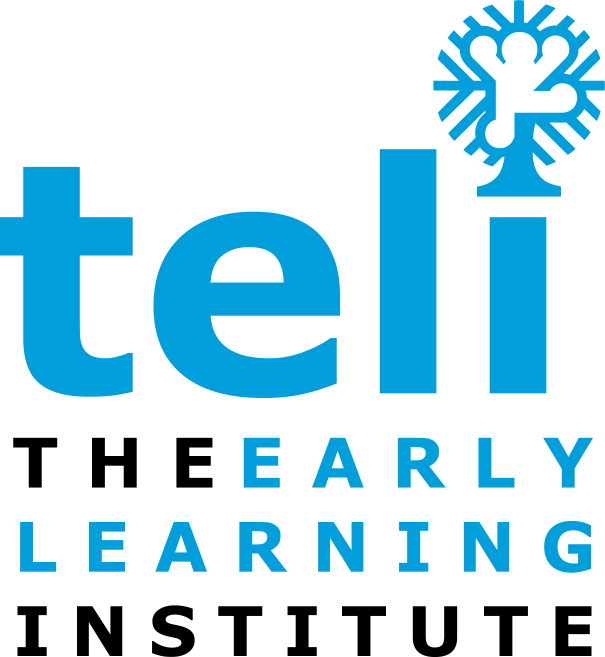 Does your child seem to struggle communicating?
Does your child seem to struggle communicating?Learning a language takes time, and children vary in how quickly they master milestones in language and speech development. Often children may have trouble with some sounds, words, and sentences while they are learning. However, there are a variety of resources available through Early Intervention that can support a child who is having difficulties.
At teli our Speech Language Pathologists and Hearing Specialists have extensive experience with speech and language concerns and are excellent resources to help. Parents are worried and want answers. To support these families, our staff has identified some of the most common questions that parents ask and importantly, provides answers.
A: When your child is in his high chair and points to the snack on the counter or makes a grunting sound so that you will put more snacks on his tray, he is communicating with you. Early communication skills begin with reaching by isolating the index finger and grunting, are usually seen at 12 to 14 months of age and soon followed by pointing. First words start to emerge around age one, but some children may need some help to move beyond pointing and grunting.
Here are some ways parents can help their children begin to build their vocabulary:
Resource: Kelly Beddall, teli Speech Language Pathologist
A: It is very common for young children to make sound errors when they are learning to talk. Early talkers will use simplified versions of adult speech to make words easier to say. A child develops various speech sounds at different developmental ages with p, m, b, t, and d sounds being some of the earliest developing sounds. S, l, and r sounds are common sounds that are mispronounced, the age of mastery for these sounds occurs between 6-8 years of age.
The “r” sounds is often one of the last sounds to be mastered. That means when your little one is saying “wabbit” for “rabbit” or “thun” for “sun” it is likely that they will eventually learn to make the correct sounds on their own as they mature and grow. When your child is school age a speech and language screening can help detect if your child’s speech errors are typical or delayed.
If you are concerned about your child’s speech and language development, be sure to talk to your pediatrician regarding Early Intervention Services. Getting your child help early in the process is essential!
Resource: Kelly Beddall, teli Speech Language Pathologist
A: Children typically begin to use more than one word to communicate once they have about 50 words in their spoken vocabulary, which often occurs by 24 months of age. To build sentences, children will also need to learn a variety of types of words to construct sentences, just as we do. They will need many nouns (Mama, bear) and some verbs (go, do), preposition/location words (up, out), pronouns (my, me), and adjective/descriptive words (big, yucky). Some indicators that a child may be ready to use two-word phrases can include: babbling followed by a real word (mabada out) and repeating single words (up up).
When children first begin to combine words, their phrases will not include all of the words necessary to make a complete sentence; therefore, one phrase may have many different meanings. For example, “me ball” may mean “that’s my ball”, “I have a ball”, or “I want the ball”. The listener will need to interpret the meaning of the phrase by observing the child behavior or actions.
Caregivers can help their child to use two-word phrases throughout their daily routines. One way to help is to expand on what they say. If your child uses a single word, respond by adding a word to what they said. For example, they say “bubble”, respond with “bubble up” or “more bubble”.
Another way to help is to offer choices using two-word phrases. At meals/snacks you can offer “more cracker or more cheese”. While playing, give choices about what to do with a toy (“block on or block off”). At bath time give choices about what to wash (“wash arm or wash leg”). Encourage your child to answer using the two words that you modeled. Lastly, use two-word phrases to narrate what you are doing or what you see while you are with your child (mommy wash, big dog).
Resource: Beth Anzaldi, teli Speech Therapist
A: Most children begin to point between 9 and 12 months of age. Some children may not begin to point until closer to 15 months of age. Children sometimes use a whole hand, reaching gesture before they begin to isolate the index finger to clearly point.
Children use pointing gestures for a variety of reasons. Infants and toddlers will point to communicate to an adult what they want, such as pointing a cookie to mean “I want the cookie!” Other times a child might point to share an experience with an adult, such as “I see a lion in my book.” They may also attempt to draw an adult’s attention to something by pointing such as “Look at that big ball!”
Pointing is a very important communication milestone and is one of a child’s earliest forms of communication. If your child is not pointing by the ages of 15-18 months, it is important to follow up with a professional.
Resource: Lea Uhl, teli Speech Language Pathologist
A: Dependent on a child’s age, the number of words they can master can vary. By 24 months a child should have a vocabulary of 50 words or so. The best way to encourage your child to expand their vocabulary is to be sure to talk to them throughout the day, describing your daily routine activities. Children model what you do. Here are some suggestions to put into practice today!
Resource: Kristi Keele, teli Speech Language Pathologist
A: Following a command for a toddler can be difficult. Sometimes parents may underestimate what a child understands. A child must understand words before he can talk and before we expect her to obey. If you are concerned about your child’s progress to learn to speak or hear you, you should immediately discuss this with your pediatrician. Early Intervention services can help you to understand if there is an underlying developmental delay or if your child is just learning at their own speed.
Based on your child’s situation, there are a number of ways which you can help your child understand what you are saying. Here are a few suggestions:
Early Intervention can provide an essential support for your child and getting help early can provide your child with the therapy needed to get them on the right road to speak and understand language.
Resource: Christine Large, teli Speech Language Pathologist
A: A parent knows their child better than anyone and are often the first person to recognize that something just doesn’t seem right. Hearing is essential to the development of your child’s speech and language skills.
Dependent on the age of your child, developmental milestones are key indicators that any parent must monitor to be aware of potential childhood developmental delays. Some of those milestones by the age of your child include:
If you are not observing your child’s achievement of the above noted milestones and you are concerned that your child may have a hearing loss, it is important to discuss the symptoms with your pediatrician as soon as possible. Your pediatrician can help refer you to a pediatric audiologist for an extensive hearing evaluation to properly diagnose a hearing loss and formulate a treatment plan including Early intervention services.
Resource: Amanda Wysocki, teli Hearing Specialist
If you are continuing to see challenges in helping your child with the concerns listed above, you should talk to your health care provider. Importantly, Early Intervention Services are available at no cost to you! Get connected today.
